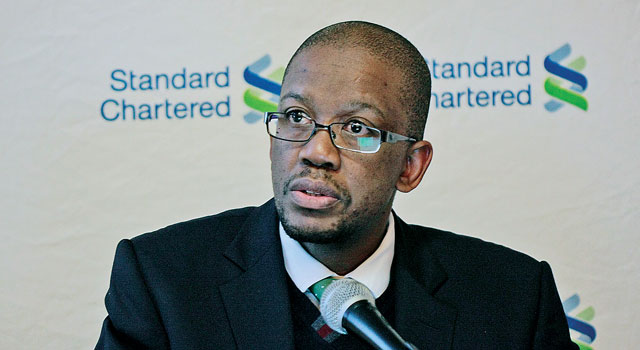In the last ten years, commercial banking in Botswana has led the financial sector with little difficulty. Profits were double digit and the number of banks grew significantly even throughout the worst international financial environment in the 21st century.
Those days look like a distant past for many bankers as the end of the results seasons has seen an industry licking its wounds from a bruising year. Add the drying up of liquidity that began towards the end of 2014 to the equation, then it’s truly has been a battering 12 months for local banks.
All the top four banks, First National Bank Botswana, Standard Charted, Barclays and Stanbic Bank have reported significant decline in profits for their half and full year financial statements. Even the recently bought out Banc ABC which has been a rising star failed to impress in the previous year.
Recently, the country’s oldest bank, Standard Charted announced a lacklustre set of financials for its shareholders as profits were totally flat. While their total income was up 7%, Profit before tax went up to P406 500 million from P405 600 million in 2013.
Standard Managing Director Moatlhodi Lekaukaku acknowledged that the ‘good old’ days are gone. “Days of large profits are past, however it’s up to us to come up with new products that will return us to double digit growth soon.” On the lack of liquidity in industry, Lekaukau said his bank’s ‘war chest’ was solid at the moment and they have been able to leverage on their relationship within their global group.
Most banks continue to complain about low interest rates as the source of their frustrations and part to blame for the liquidity issues they face, the bank rate currently stands at 6.5%. The central bank threw them a life line several weeks ago by reducing the primary reserve requirement by 5% injecting up to P2.3 billion tax free money into the banking sector.
Questions remain whether the move by the Bank of Botswana will help return an industry that was so accustom to high profits back to stability. Economist at Econsult Thabelo Nemaorani observed that the reduction in the Primary Reserve might just be a stop gap in the medium term. “Many of the banks probably had to reach out to their parent companies when liquidity supply was at its lowest, that means they are having loans to service, and this P2.3 billion could possibly just be used to repay those facilities.” He said the jury was still out on if the banks will not be back in the same position in the future.
Banks have been in a rush to retain deposits from their customers in a bid to stem liquidity shortages. Most banks have of late put strategies in place to entice deposits by offering high returns even for menial depositors. For instance last week, Bank Gaborone launched a new set of savings accounts. The Namibian originating bank is offering up to 6% return on some deposits.
Standard Chartered on the other hand launched a short term deposit scheme. Depositors with P20 000 and above will be guaranteed an 8% return, which is exceptional as the prime rate stands at 9%.
According to a banking insider, the liquidity crunch was at its craziest in the final months of 2014 when banks went into panic mode. “It was total madness, and to a great extent there was a lot of illogical thinking behind some of the offering the banks were making for deposits.” The insider said due to the market knowing that the banks were dry, a lot of large depositors demanded prime rates for their money or threatened to move. “It was shocking because many of these transactions had such squeezed margins that the banks were making losses on them just to save face and retain clients.”
Financial analyst at Blackthread Karabo Tladi said banks are likely to face increased financial pressure going forward as they will be forced to continue to raise cash in a tough market. “I expect banks to come forward and issue Medium Term Notes, MTNs. Barclays have already done it and I expect more to follow. The banks need funds not only for liquidity purposes but also for regulatory reasons, remember requirement for Basel two and three their deadline is the end of this year.”
Tladi said going forward there is a bleak outlook for the industry. “I expect muted profits growth going forward. Banks will have to be more innovate and come up with ways to grow their non interest income.” He observed that only those with high value banking products will ‘weather the storm’.
Tladi also called for a development of an interbank market which will see banks lending to each other. “It’s high time our interbank market starts becoming active, in normal markets that how things operate.”

